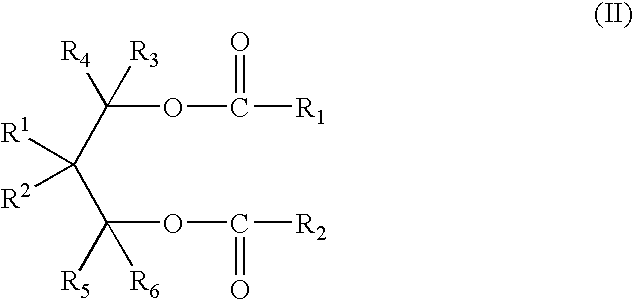Catalyst component and catalyst for olefin polymerization as well as use thereof
a technology of catalyst and olefin polymerization, which is applied in the direction of catalyst activation/preparation, physical/chemical process catalyst, chemical/physical process, etc., can solve the problem of increasing the cost of catalyst, the morphology of catalyst particles is relatively difficult to be stably controlled by temperature programming, and the catalyst particle size is relatively small
- Summary
- Abstract
- Description
- Claims
- Application Information
AI Technical Summary
Problems solved by technology
Method used
Image
Examples
example 1
[0059] 1. Preparation of the Solid Catalyst Component
[0060] To a glass flask, in which air had been completely replaced with high pure N2, were added successively 5.0 g of anhydrous magnesium dichloride, 100 ml of toluene, 7.0 ml of epoxy chloropropane, and 8.0 ml of tributyl phosphate. The mixture was heated at 60° C. to dissolve the solid completely. The solution was cooled to −25° C. and 40 ml of TiCl were added dropwise thereto, followed by the addition of 3.0 g of silica (available from GRACE Corp., 2212 grade, d50=11 μm, and the silica was dried at 600° C. for 4 hours before it was used). Then the temperature was raised slowly to 80° C., and 10 ml of diisooctyl phthalate was added in the course of raising the temperature. Solids precipitated gradually during the heating. The resultant solids were treated with 40 ml of titanium tetrachloride. After filtering, the solids were washed with toluene twice and with hexane twice, and dried under a vacuum, and 11 g of solid catalyst c...
example 2
[0063] 1. Preparation of the Solid Catalyst Component
[0064] The procedure as described in Example 1 was followed, except for the amount of silica being changed as 1.5 g. The particles sizes of silica and the obtained catalyst component are shown in Table 1.
[0065] Polymerization of propylene: being carried out according to Example 1. The polymerization results are shown in Table 2.
example 3
[0071] 1. Preparation of the Solid Catalyst Component
[0072] To a glass flask, in which air had been completely replaced with high pure N2, were added successively 5.0 g of anhydrous magnesium dichloride, 100 ml of toluene, 7.0 ml of epoxy chloropropane, and 8.0 ml of tributyl phosphate. The mixture was heated at 60° C. to dissolve the solid completely. Then 3.0 g of silica (available from GRACE Corp., 2212-grade, d50=11 μm, and the silica was dried at 600° C. for 4 hours before it was used) were added thereto. The solution was cooled to −25° C. and 40 ml of TiCl4 were added dropwise thereto. Then the temperature was raised slowly to 80° C., and 1.0 ml of diisooctyl phthalate was added in the course of raising the temperature. Solids precipitated gradually during the heating. The resultant solids were treated with 40 ml of titanium tetrachloride. After filtering, the solids were washed with toluene twice and with hexane twice, and dried under a vacuum, and 8.0 g of solid catalyst co...
PUM
| Property | Measurement | Unit |
|---|---|---|
| particle diameter | aaaaa | aaaaa |
| particle size | aaaaa | aaaaa |
| temperature | aaaaa | aaaaa |
Abstract
Description
Claims
Application Information
 Login to View More
Login to View More - R&D
- Intellectual Property
- Life Sciences
- Materials
- Tech Scout
- Unparalleled Data Quality
- Higher Quality Content
- 60% Fewer Hallucinations
Browse by: Latest US Patents, China's latest patents, Technical Efficacy Thesaurus, Application Domain, Technology Topic, Popular Technical Reports.
© 2025 PatSnap. All rights reserved.Legal|Privacy policy|Modern Slavery Act Transparency Statement|Sitemap|About US| Contact US: help@patsnap.com



